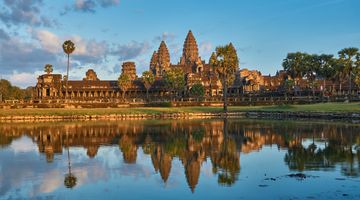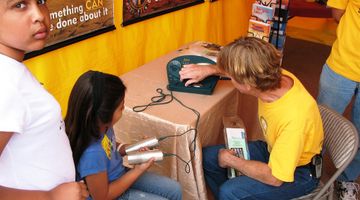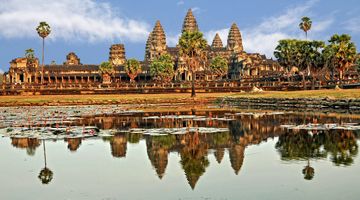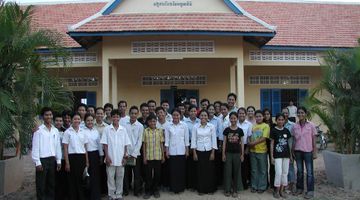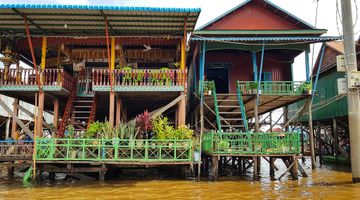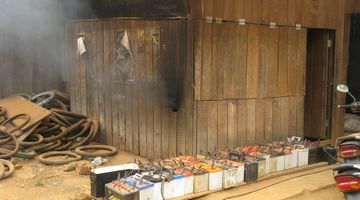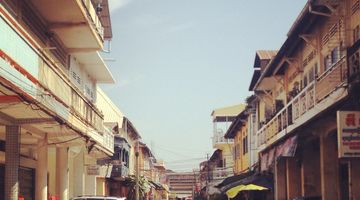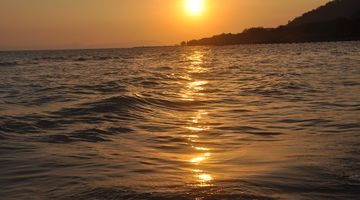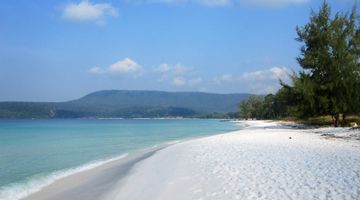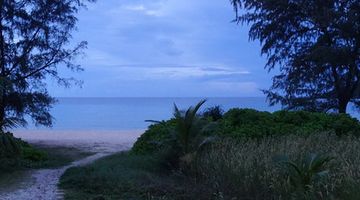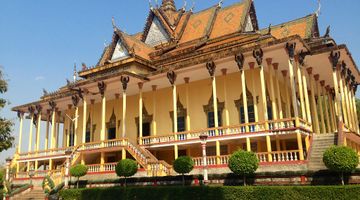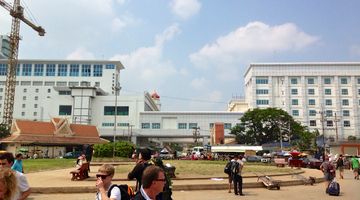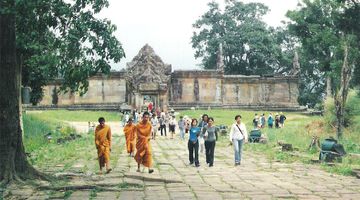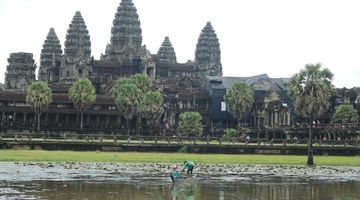Angkor Wat Cambodia - The Ultimate Travel Guide
Angkor is the largest religious complex in the world. No, it is not as boring as it sounds at all! Just 5.5 km away from the city centre of Siem Reap lies an expansive set of intricately designed individual temples sprawling out over 400 acres. In the early 12th century, Angkor Wat was originally built as a Hindu temple but soon converted to Buddhist. Ancient folklore states that the entirety of the temples were built overnight – work well done, we would say! Whether this is true or not can be up to you but there is no denying the extensive amount of detail that has gone into the design.
Though it was once a heavily travelled temple, the Khmer Rouge resulted in a bit of abandonment which has merged the jungle growth inwards to the temple, creating a magical blend of architecture combined with nature. The temples are still home to several monkeys and elephants which can be seen hanging around the various structures. In the 20th century the temples were repaired and Angkor became a UNESCO world Heritage site in 1992. Even though it is in a protected state, its infrastructure is at risk due to its estimated 2 million annual visitors.
Why go
Sure, Southeast Asia can offer more temples than one knows how to see, but we assure you this one is not worth missing. Generally speaking, you will also never see every temple in Angkor because there are multiple, some completely unreachable to the general public. However these temples are submerged in the jungle and are hands down the most incredibly designed temples I've ever seen. It could take days to see every temple worth visiting, but let us be honest: the majority of us – well, at least during our first visit – go on for a jolly ride joining the crowds hitting the dusty roads of the so-called ‘Small Circuit’. Thought it is definitely nowhere close to be an ‘off the beaten track destination’, it is still an amazingly cool experience!
The star temples not to miss – even if you are strongly against super kitsch attractions – are Angkor Wat, Bayon, Baphuon and Ta Prohm – the latter featured in the Hollywood film with Angelina Jolie, Tomb Raider. The Elephant Terrace is no less striking, and elegant stone windows of the Khleangs are very impressive.
When to go
They say the best time to visit Angkor is during the ‘cold’ month from November to February. To some extend it is true, but expect huuuuuge crowds at the most popular monuments – and they definitely do not add any charm to the place. Summers are scorching hot, but who cares – are you a real traveller or not???
It's best to get to the temples as early as you can in the morning to beat the crowds and see the sunset, but as for me, we never manage to get up before 7am (or – more realistic – before 8am) while travelling, which means we hit the worst period for sightseeing: the burning sun and awful light for photography – and still enjoy the whole process, so we would say it is no matter when you visit.
If you are planning a sundowner at Angkor, be ready for literally hordes of tourists invading both Angkor Wat and Phnom Bakheng, alas.
Costs & opening hours
There are several options for ticketing that you can chose from. They are available for purchase at the main entrance to the park. Tickets range from the 1-day pass priced at $40USD to a 3-day ($62USD) or weeklong pass (for $72 USD.) These passes include access to almost every temple but if you're counting on seeing Beng Mealea and Phnom Kulen you will have to pay an extra $20USD.
Your ticket will require having your photo taken on it, to ensure validity and please be prepared to pull it out at almost every stop.
Visiting hours are from 5am till 6pm but some sights have shorter hours.
To tell the truth, we know people who managed to visit the archaeological site free of charge regardless all the cordons. But we do not think that running away like a thief each time you see tickets being checked at various temples enhance your experience.
Getting around
Angkor is not the type of place that is travelable via walking – believe us, we are great fans of getting on foot whenever possible – and we always have heated arguments on this point with our fellow travellers. Angkor is far too big.
If you're a comfort-loving creature and are not on a tight budget we would highly suggest renting a car for the day ($40-$50) or perhaps a minivan if you're in a larger group. This is nice because you'll have the vehicle all day but mostly it's just a major relief getting back into a vehicle that has air conditioning.
If you're after that quintessential Angkor experience and are on more of a backpacker's budget however, rent a tuk-tuk ($15.) If you're lucky your tuk-tuk driver can also serve as an unofficial tour guide offering knowledge on the temples you may not find out from initially seeing them. This type of transportation will not be hard to find as there is quite a saturated market of drivers in both car and tuk-tuk that will approach you. As stated in the Siem Reap article, always discuss payment before taking the actual ride.
Real no-frills travellers should definitely opt for a bicycle ride. All the temples of the Small Circuit, including Tha Prom, the Elephant Terrace and Bayon are easily reached on two wheels – either self guided or with any of a multitude of bicycle tour companies. The cost for one day’s rental of a bicycle is only $2-$3 – and bicycles are available readily anywhere in Siem Reap. If you're unsure ask a staff member at your hotel for the best bet.
There are some options to ride elephants around the temple but this is generally quite cruel for the creatures given the weight and excess heat. Recently an elephant carrying a tourist died from these harsh conditions and we generally would not condone this type of animal tourism.
What to wear
Or rather what not to wear. Spaghetti tops or – even worse – bare torso are both out of the question for two reasons. Reason number one is as Buddhists have a certain belief about the way you should be dressed upon entry, it is best to respect the Khmer people and their culture. Bare midriffs exposing shoulders, legs and chest are highly forbidden. Reason number two is although it is extremely sweltering in temperatures, exposing your shoulders and legs does no good – on the contrary, you will regret every square centimetre of your skin left uncovered in the sun. Nearby vendors sell scarves and coverings for the forgetful tourist but they will be at a painfully inflated rate. The best option is to pack a sarong and convert it to a draped skirt when entering the temples.
Safety tips & other recommendations
Vendors: The vendors can be quite aggressive, arguing and being very pushy in regards to their products and sales tactics but keep a firm ground and be assertive. Many of the exact same handicrafts and items sold at the markets in Siem Reap for a much lower rate.
Snacks: Snacks, beers and sodas, as well as many makeshift sit down cafes are located around Angkor Wat and sparsely scattered around the other markets. Buying a bottle of cold beer and throwing yourself down to the red soil after a crazy day of sightseeing with Angkor Wat towering behind you is an unforgettable experience!
Sun: Always keep guarded from the sun – use sunscreen, have a hat, a cap or a bandanna on and wear long sleeves. Drink water – bring it with you or buy at the spot.
Respect: Be respectful. This is an amazing part of history and with all the traffic going through these parts it is important to follow instruction, do not stray from suggested areas and please pick up your litter.
Steps: Be ready to climb up and down countless steps – you may want to bring gloves to help you at the steepest sections. Remember: accidents are not unheard of! People do fall down from the temples. And die, too.
Photo: If you're into photography this will be your dream location and an incredible place to be during sunrise and sunset.
